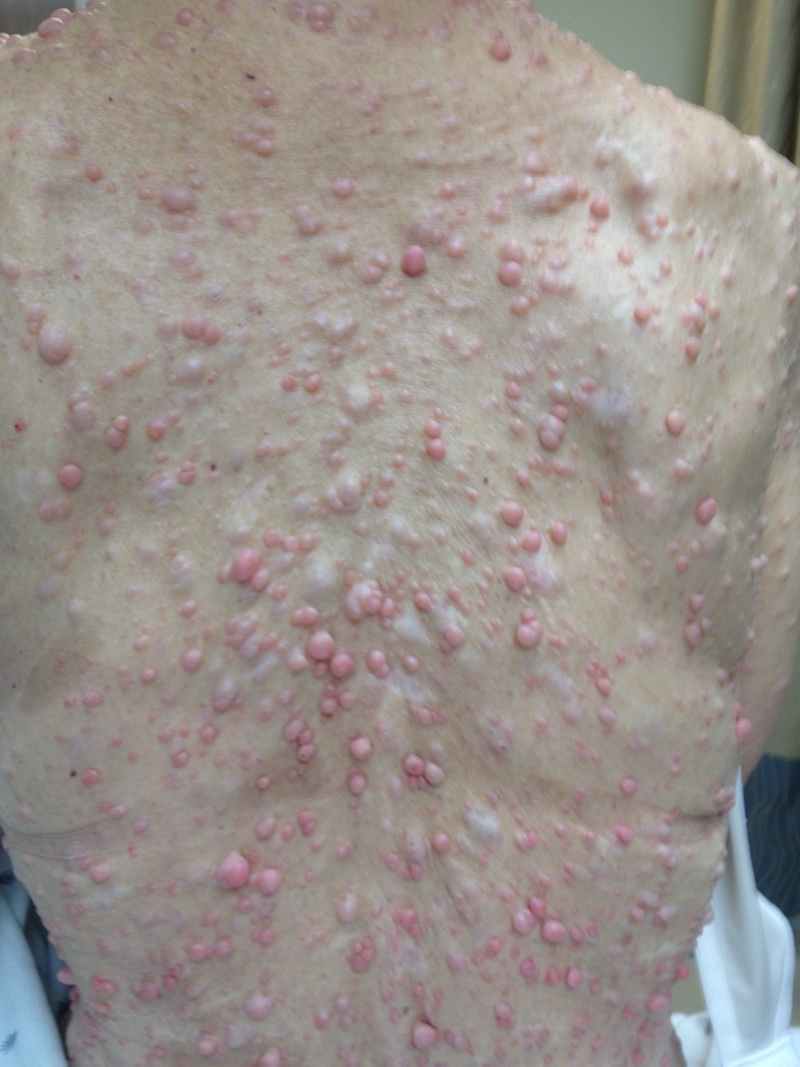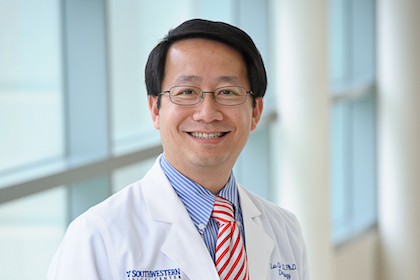Marker found for condition that causes numerous tumors
DALLAS – Oct. 22, 2018 – UT Southwestern researchers have made a major advance in uncovering the biology of how thousands of disfiguring skin tumors occur in patients troubled by a genetic disorder called neurofibromatosis type 1 (NF1). This scientific advance could slow the development of these tumors.
NF1, which affects 1 in 3,000 people, has a wide spectrum of symptoms that include malignant tumors, high blood pressure, and learning disorders. While the skin tumors, which are called cutaneous neurofibromas, are most often noncancerous, they can number in the thousands and cover much of a patient’s body. They also can be painful or itchy, catch on clothing, bleed and become infected. Perhaps even more severe than the physical discomfort is the emotional distress. NF1 tumors can be severely disfiguring, like a layer of warts across the skin, and patients often dress to hide them.
Currently, the only treatment for neurofibromas is surgical removal of the most uncomfortable and most disfiguring of the skin tumors. It would be impossible to remove them all.
“NF1 causes significant morbidity, and an effective treatment for NF1 is long overdue,” said Dr. Lu Le, an Associate Professor of Dermatology who holds the Thomas L. Shields, M.D. Professorship in Dermatology at UT Southwestern Medical Center.

“For the first time we have a mouse model that develops different types of neurofibromas inside the body and on the skin, just like in humans. Because of this model, we now know the exact origin of these two types of tumors. If you know where the tumor begins, and you know the end result, then you can follow the steps in the occurrence of the tumor and figure out how to interrupt the development of the tumors,” said Dr. Le, who treats NF1 patients as well as does research on the condition.
The researchers found that the protein Hox-B7 is a marker for the cell of origin for NF1 tumors. “It’s like a GPS system in a car. By making the Hox-B7 cells light up, we can follow the development of the tumor. It’s like branding,” said Dr. Le, the senior author of the study and a member of the Harold C. Simmons Comprehensive Cancer Center.
Another key discovery is that a parallel pathway, the Hippo pathway, can modify growth and development of these tumors. This is particularly important because treatments are being developed to block the Hippo pathway. “If you can control the Hippo pathway, you should be able to slow the development of neurofibromas, specifically in NF1 patients who also have genetic changes in their Hippo pathway,” Dr. Le said.
The research appears in the journal Cancer Discovery.
Other UT Southwestern researchers involved in this study were first author and Assistant Instructor Dr. Zhiguo Chen; postdoctoral researchers Dr. Juan Mo, Dr. Jean-Philippe Brosseau, Dr. Chung-Ping Liao, and Dr. Jonathan Cooper; research associates Tracey Shipman and Yong Wang of Dermatology; and Professor of Internal Medicine and Molecular Biology, Dr. Thomas Carroll. Dr. Carroll holds the NCH Corporation Chair in Molecular Transport.

“Research reported in this news release was supported by the National Cancer Institute of the National Institutes of Health under Award Number R01CA166593. The content is solely the responsibility of the authors and does not necessarily represent the official views of the National Institutes of Health. Research was also supported by the U.S. Army Medical Research and Materiel Command, Children’s Tumor Foundation Award, Dermatology Foundation, the Giorgio Foundation, the Neurofibromatosis Therapeutic Acceleration Program, and the NF1 Research Consortium Fund.”
UT Southwestern is recognizing its 75th year in 2018. The Harold C. Simmons Comprehensive Cancer Center, one of 49 NCI-designated Comprehensive Cancer Centers in the U.S. and the only one in North Texas, is among just 30 U.S. cancer research centers to be designated by the NCI as a National Clinical Trials Network Lead Academic Participating Site.
About UT Southwestern Medical Center
UT Southwestern, one of the premier academic medical centers in the nation, integrates pioneering biomedical research with exceptional clinical care and education. The institution’s faculty has received six Nobel Prizes, and includes 22 members of the National Academy of Sciences, 17 members of the National Academy of Medicine, and 15 Howard Hughes Medical Institute Investigators. The faculty of more than 2,700 is responsible for groundbreaking medical advances and is committed to translating science-driven research quickly to new clinical treatments. UT Southwestern physicians provide care in about 80 specialties to more than 105,000 hospitalized patients, nearly 370,000 emergency room cases, and oversee approximately 2.4 million outpatient visits a year.




